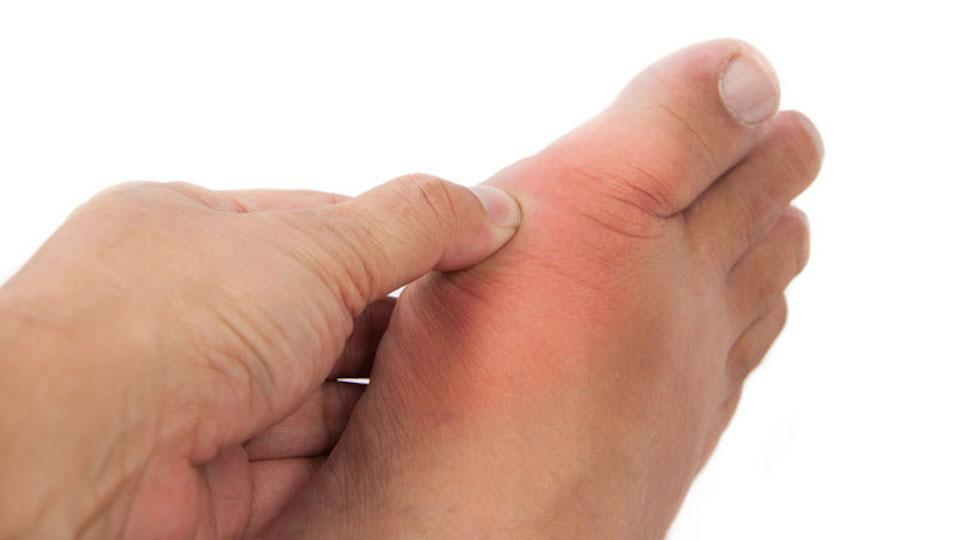Gout
What is gout?

Who is affected by gout?
- Men between the ages of 40 and 50 years.
- Older people taking diuretics (also known as ‘water pills’ or tablets which help the body get rid of water).
What are the symptoms?
What causes it?
- Drinking alcohol.
- Dehydration (not drinking enough water).
- Being overweight or overeating.
- ‘Crash’ dieting or fasting.
- Eating certain foods.
How is gout diagnosed?
Gout is diagnosed by finding crystals of uric acid in fluid taken from your joint. Your doctor may test your urine to see if your body is getting rid of extra amounts of uric acid. Uric acid levels can also be measured by blood tests, however these are not always accurate. Uric acid levels may be normal or even lowered during an attack or gout. Blood tests are most useful in ruling out other types of joint infections or arthritis. X-rays are often normal in the early stages of gout so are not very useful in diagnosing gout.
What will happen to me?
Without treatment, a gout attack usually lasts about one week. Another attack may not happen for months or even years. If gout is not managed well, the time between attacks may get shorter, the attacks more severe and the joints can be permanently damaged. Sometimes gout can progress into a chronic (long term) condition, causing:
- Constant mild pain & inflammation of the affected joints.
- Tophi – solid deposits (lumps) of uric acid crystals, especially on the ears, fingers, hands, forearms, knees, and elbow.
- Kidney stones.
What can I do during a gout attack?
- Non-steroidal anti-inflammatory drugs (NSAIDs).
- Corticosteroid injections or tablets.
- Colchicine.
Always talk to your doctor or pharmacist before you start taking any medicines. You may also need to protect the affected joint. For example, if your big toe is affected you may need to limit the amount of walking you do and create a bed cradle to keep your sheets off your foot when you’re in bed. See the Dealing with pain information sheet for tips on coping with pain.
Can gout be prevented?
The good news is that gout can be prevented. Talk to your doctor about ways to prevent gout, including:
- Medicines: There are medicines that can lower uric acid levels in your blood. These medicines need to be taken every day, whether you are having an attack or not.
- Alcohol: Cut down the amount of alcohol you drink and avoid drinking a lot of alcohol at one time (binge drinking). Talk to your doctor or visit www.alcohol.gov.au for Australian Government guidelines on recommended alcohol intake.
- Weight loss: If you are overweight, lose weight gradually. Make sure you have a healthy diet as ‘crash’ or ‘starvation diets’ can actually increase uric acid levels. See a dietitian for advice.
- Changes in your diet: It is believed that some foods may trigger attacks of gout. These foods tend to contain high levels of purines, a substance that can be made into uric acid in the body. However not all purine-rich foods are thought to cause gout. There is also very little scientific proof that avoiding purine-rich foods can successfully reduce gout attacks. See the Gout and diet information sheet for more information about reducing the risk of gout attacks through changes in your diet.
Pseudogout is often mistaken as gout as it causes similar symptoms. However it is the result of a different type of crystal, called calcium pyrophosphate crystals, forming in the joint. These crystals tend to form in the cartilage, the smooth coating lining the ends of the bones. Pseudogout is diagnosed by finding calcium pyrophosphate crystals in the fluid of an affected joint. It is a separate condition from gout and may require different treatment.
